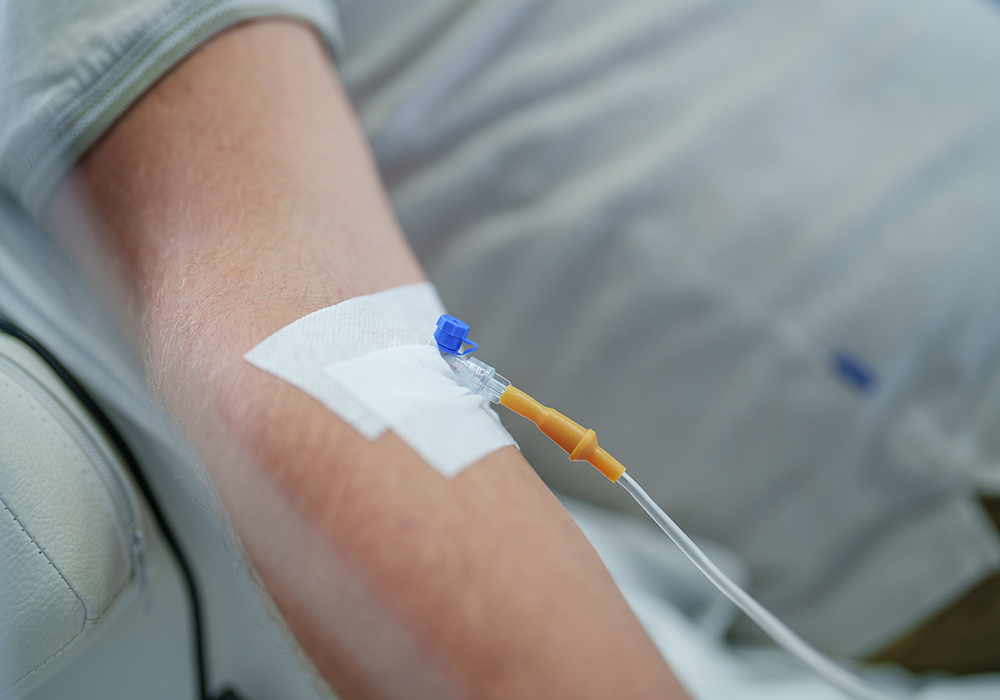| DRUG INFORMATION |
| Classification | Tumor-derived autologous T-cell immunotherapy; tumor-infiltrating lymphocyte therapy |
| Mechanism of Action | Lifileucil’s exact mechanism of action is unknown. In general, TIL therapies use T cells collected directly from the tumor and the cells are manufactured with the drug interleukin-2 (IL-2) to create cells that easily identify, navigate to, and fight the cancer specifically. |
| Indication | Adults diagnosed with metastatic or unresectable melanoma who have previously been treated with an anti–PD-1 antibody or a BRAF inhibitor, with or without MKI inhibitor if positive for a BRAF V600 variant. |
| ADMINISTRATION |
| Dosing, Frequency, and Duration | - A single dose contains between 7.5 × 109 and 72 × 109 cells divided into four individual infusion bags of 100–125 ml each, housed in protective metal cassettes.
- The treatment is for autologous use only; patient information must match identifiers on drug cassettes and infusion bags.
- Administer in an inpatient hospital setting with access to cardiopulmonary support or critical care.
- Preadministration:
- Two days prior to infusion, administer lymphodepleting cyclophosphamide and fludarabine via IV.
- Infuse lifileucel 24–96 hours following the final dose of fludarabine.
- Premedicate with diphenhydramine 30–60 minutes prior to lifileucel infusion.
- During administration:
- Thaw and administer one bag of lifileucel at a time if more than one bag is provided.
- Infuse 1 ml per minute for the first 5 minutes, then increase to 5–10 ml per minute thereafter.
- After infusing the final bag, rinse the tubing and flush with normal saline at the same rate to ensure the entire product was given.
- Postadministration:
- 3–24 hours post infusion, administer IV IL-2 every 8–12 hours for a maximum of six doses to bolster the action of manufactured T cells.
|
| Route | IV infusion |
| Safe Handling | Lifileucel does not meet the definition of a hazardous drug; however, no carcinogenicity or genotoxicity studies have been performed and its effects on fertility are unknown. Follow institutional handling precautions and local biosafety regulations to prevent infectious disease transmission. |
| WARNINGS |
Black box warnings - Cardiopulmonary and renal impairment
- Prolonged severe cytopenia
- Severe infection
- Treatment-related mortality
|
Other warnings - Hypersensitivity reaction
|
| ADVERSE REACTIONS |
Hematologic - Severe cytopenias (including thrombocytopenia, lymphopenia, neutropenia, and leukopenia) lasting for 30 days or longer occurred in 45.5% of patients in lifileucel’s clinical trials.
- Infection of any grade, including severe, life-threatening, or fatal, occurred in 26.9% of patients.
Cardiac - Tachycardia, atrial fibrillation, arrhythmia, acute myocardial infarction, cardiac ventricular thrombosis, cardiomyopathy, QT prolongation, and other cardiac disorders occurred in 9% of patients.
Hypersensitivity - Acute reactions (e.g., fever, rigors, chills, tachycardia, rash, hypotension, dyspnea, cough, chest tightness, wheezing) generally occurred and resolved within one day of infusion.
Multisystem organ hemorrhage - In the treatment’s clinical trials, intrabdominal and intracranial hemorrhage was associated with two deaths.
- Patients with thrombocytopenia must not use anticoagulants and must be monitored closely.
Additional monitoring - Signs of respiratory failure
- Signs of acute renal injury or failure
- Diarrhea, nausea, or vomiting
- Laboratory abnormalities (e.g., thrombocytopenia, neutropenia, anemia, leukopenia, lymphopenia, hypophosphatemia)
|
| NURSING CONSIDERATIONS |
| Pretreatment | - Monitor patients’ baseline cardiopulmonary and renal status, perform pregnancy testing, and review patients’ blood panels.
- Test patients for chronic viral infection, including cytomegalovirus, hepatitis B or C, and HIV.
- Confirm lymphodepletion with cyclophosphamide and fludarabine.
- Premedicate patients with diphenhydramine 30–60 minutes prior to infusion.
- Do not use a leukocyte depleting filter during administration.
- Avoid systemic steroids, which may impede lifileucel’s effect.
- Patients must be hospitalized before, during, and after administration.
- Ensure IL-2 is available prior to lifileucel administration.
|
| Administration | - Verify patient’s identity and match identifiers to the drug cassettes and infusion bags.
- Thaw and administer one bag at a time. Use room temperature water and break up clumps by inverting or massaging the bag. Inspect the bag for signs of leakage.
- Monitor patient for signs of hypersensitivity and treat as needed.
|
| Posttreatment | - Give six doses of IL-2 to enhance the efficacy of the cellular product.
- Closely monitor patients for hemorrhage, hypersensitivity reactions, and infection.
|
| PATIENT EDUCATION |
- Educate patients about possible side effects of treatment.
- Instruct patients to report symptoms such as:
- Diarrhea
- Fast or irregular heartbeat
- Low blood pressure
- Rash
- Signs of bleeding
- Signs of infection (e.g., fever, chills, fatigue, low white blood cell count)
- Remind patients to remain within a two-hour drive of the treatment site for several weeks after treatment.
|
| RESOURCES |
| Patient Resources | |
| Healthcare Professional Resources | |
| Other Resources | |






